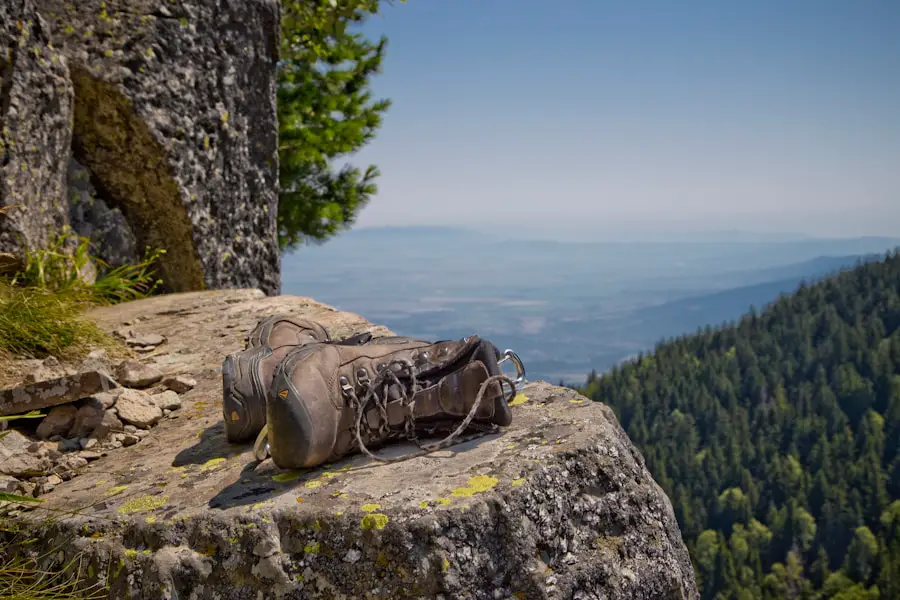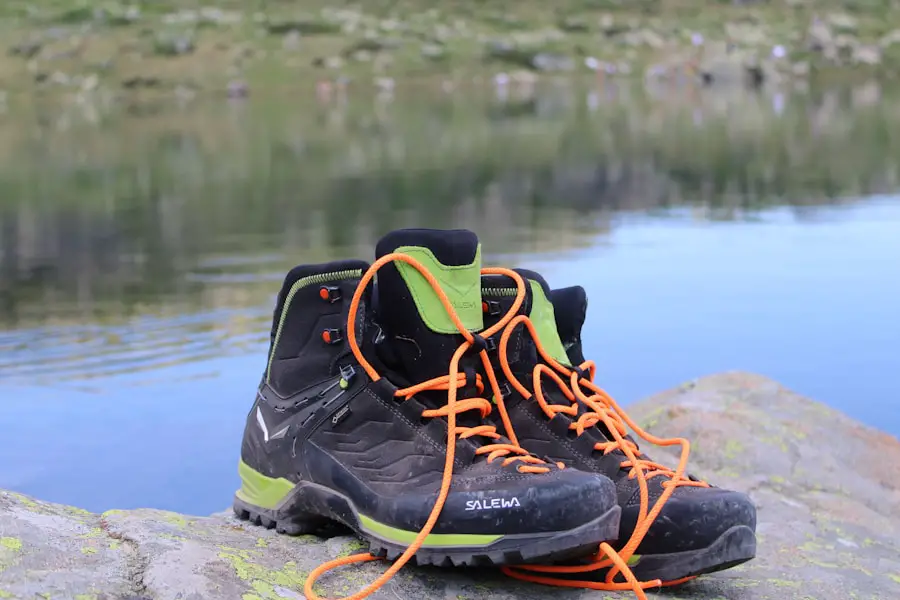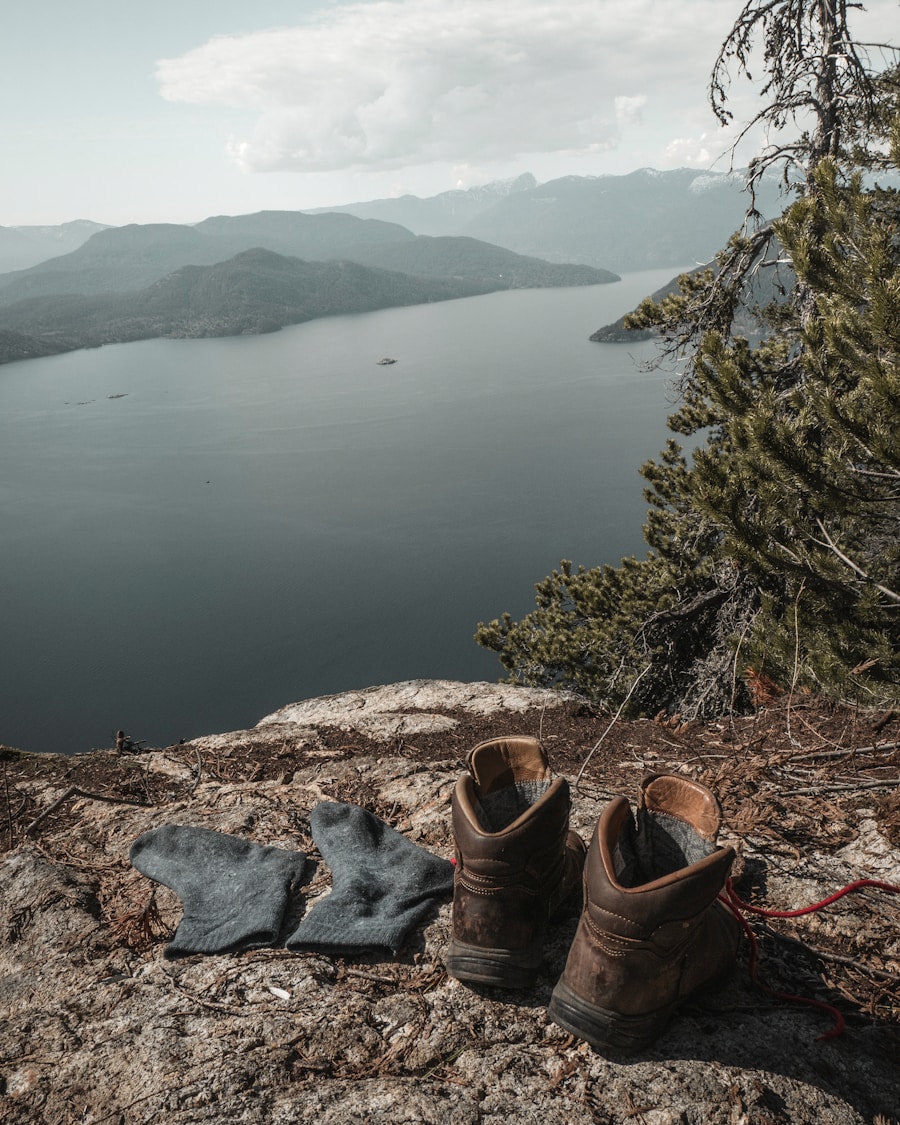Hiking boots are more than just footwear; they are essential gear that can significantly influence the quality of your outdoor experience. Properly maintained hiking boots provide the necessary support, traction, and protection required to navigate various terrains safely. When hiking, the feet endure considerable stress, and the right boots can help mitigate the risk of injuries such as blisters, sprains, and even fractures.
A well-fitted and maintained pair of hiking boots can enhance comfort, allowing hikers to focus on the beauty of nature rather than the discomfort of their feet. Moreover, the importance of hiking boots extends beyond personal comfort and safety. They play a crucial role in ensuring that hikers can traverse different environments without damaging the ecosystem.
Boots designed for hiking often feature specialized soles that minimize soil compaction and protect delicate vegetation. When hikers wear well-maintained boots, they are less likely to leave behind debris or contaminants that could harm local flora and fauna. Thus, investing time and effort into maintaining hiking boots not only benefits the individual but also contributes to the preservation of natural landscapes.
Key Takeaways
- Properly maintained hiking boots are essential for a comfortable and safe hiking experience.
- Factors such as frequency of use, terrain, and maintenance practices can affect the lifespan of hiking boots.
- Signs that your hiking boots need to be replaced include visible wear and tear, loss of traction, and decreased support.
- Tips for extending the lifespan of hiking boots include regular cleaning, proper storage, and timely repairs.
- Hiking boots should be replaced every 500-1000 miles, depending on usage and condition.
Factors Affecting the Lifespan of Hiking Boots
The lifespan of hiking boots is influenced by a multitude of factors, each contributing to how long they can effectively serve their purpose. One of the most significant factors is the frequency and intensity of use. Boots that are used regularly on rugged trails will naturally wear out faster than those used occasionally on well-maintained paths.
The type of terrain also plays a critical role; rocky, uneven surfaces can cause more abrasion and damage compared to flat, smooth trails. Additionally, the weight of the hiker can impact how quickly the boots degrade; heavier individuals may exert more pressure on the soles and materials, leading to faster wear. Another crucial factor is the quality of materials used in the construction of the boots.
High-quality leather or synthetic materials tend to offer better durability and resistance to wear and tear compared to cheaper alternatives. The construction techniques employed also matter; for instance, boots with reinforced stitching and robust soles are likely to last longer than those with simpler designs. Furthermore, environmental conditions such as exposure to moisture, extreme temperatures, and UV rays can accelerate deterioration.
Boots that are frequently exposed to wet conditions may develop mold or mildew if not dried properly, while prolonged exposure to sunlight can cause materials to become brittle.
Signs that Your Hiking Boots Need to be Replaced

Recognizing when it’s time to replace your hiking boots is crucial for maintaining safety and comfort on the trails. One of the most apparent signs is visible wear on the soles. If the tread has worn down significantly or if there are bald spots, it’s time to consider a new pair.
The tread pattern is designed to provide traction; without it, hikers risk slipping on wet or uneven surfaces. Additionally, if you notice any cracks or deep cuts in the rubber sole, this indicates that the structural integrity of the boot has been compromised. Another sign that your hiking boots may need replacement is discomfort during use.
If you start experiencing blisters or hotspots on your feet after hikes that previously felt comfortable, it could be a sign that the cushioning or support has degraded. Similarly, if you find that your feet are rolling inward or outward more than usual while walking, this could indicate that the boot’s support features have worn out. Lastly, if you notice any significant water leakage during wet conditions, it suggests that the waterproofing has failed, which can lead to cold and uncomfortable hikes.
Tips for Extending the Lifespan of Your Hiking Boots
| Tips for Extending the Lifespan of Your Hiking Boots |
|---|
| 1. Clean your boots regularly to remove dirt and debris that can cause damage. |
| 2. Allow your boots to air dry after each use to prevent mold and mildew. |
| 3. Use a waterproofing treatment to protect your boots from moisture and prolong their lifespan. |
| 4. Store your boots in a cool, dry place away from direct sunlight to prevent deterioration. |
| 5. Replace worn out laces and insoles to maintain the support and comfort of your boots. |
| 6. Get your boots professionally resoled when the treads wear down to extend their use. |
To maximize the lifespan of your hiking boots, implementing a few simple care practices can make a significant difference. First and foremost, proper cleaning after each hike is essential. Dirt, mud, and debris can accumulate in crevices and cause materials to break down over time.
After each outing, take a moment to remove any loose dirt with a soft brush or cloth and rinse them with water if necessary. For deeper cleaning, use a mild soap solution and a soft brush to scrub away stubborn grime without damaging the material. Another effective way to extend the life of your hiking boots is to allow them to dry properly after use.
Wet boots should never be placed near direct heat sources like radiators or campfires, as this can cause materials to warp or crack. Instead, remove insoles and laces, then let them air dry in a well-ventilated area away from direct sunlight. Additionally, consider using boot trees or stuffing them with newspaper to help maintain their shape while drying.
Regularly applying waterproofing treatments can also help protect against moisture damage and keep your boots in optimal condition.
How Often Should Hiking Boots be Replaced?
Determining how often hiking boots should be replaced can vary widely based on individual usage patterns and care practices. As a general guideline, many experts suggest replacing hiking boots every 300 to 500 miles of use. However, this estimate can fluctuate depending on factors such as terrain difficulty, boot quality, and personal foot mechanics.
For instance, someone who frequently hikes on rugged trails may find their boots wearing out closer to the 300-mile mark, while those who stick to well-maintained paths might stretch their usage closer to 500 miles. It’s also important to consider how long you’ve owned your boots rather than just mileage alone. Even if you haven’t reached the mileage threshold, materials can degrade over time due to environmental exposure and general wear.
If your boots are several years old but have seen limited use, it’s wise to inspect them thoroughly for signs of deterioration before heading out on a hike. Ultimately, listening to your body and paying attention to how your boots feel during hikes will provide valuable insight into when it’s time for a replacement.
Proper Care and Maintenance of Hiking Boots

Proper care and maintenance are vital for ensuring that hiking boots remain functional and comfortable over time. One key aspect is regular inspection for any signs of damage or wear. Before each hike, take a moment to check for loose stitching, cracks in the sole, or any other visible issues that could affect performance.
Addressing minor repairs early can prevent more significant problems down the line. For example, if you notice a small tear in the upper material, using a specialized adhesive or patch can extend its life significantly. In addition to inspections, conditioning leather boots is essential for maintaining their suppleness and preventing cracking.
Leather can dry out over time due to exposure to moisture and sunlight; therefore, applying a quality leather conditioner periodically will help keep it hydrated and flexible. For synthetic materials, using appropriate cleaning agents designed for those specific fabrics will ensure that they remain intact without causing damage. Finally, storing your hiking boots properly when not in use is crucial; keeping them in a cool, dry place away from direct sunlight will help preserve their integrity.
Choosing the Right Hiking Boots for Longevity
Selecting the right pair of hiking boots is fundamental for ensuring longevity and performance on the trails. When shopping for hiking boots, consider factors such as fit, material quality, and intended use. A proper fit is paramount; boots should feel snug but not overly tight in key areas like the heel and midfoot while allowing enough room for toe movement.
Trying on boots with the socks you plan to wear during hikes will provide a more accurate sense of comfort. Material choice also plays a significant role in durability; leather boots tend to offer better longevity compared to synthetic options but may require more maintenance. Conversely, lightweight synthetic materials may be more comfortable initially but could wear out faster under heavy use.
Additionally, consider features such as waterproofing technology and sole design; Vibram soles are known for their durability and traction on various surfaces. Ultimately, investing in high-quality boots tailored to your specific hiking needs will pay off in terms of both performance and longevity.
Environmental Impact on the Lifespan of Hiking Boots
The environment plays a significant role in determining how long hiking boots last before they need replacement. Factors such as climate conditions—temperature fluctuations, humidity levels, and exposure to UV rays—can all contribute to material degradation over time. For instance, prolonged exposure to moisture can lead to mold growth or deterioration of waterproof membranes within the boot structure.
Similarly, extreme heat can cause synthetic materials to become brittle or warp. Additionally, the type of terrain hiked upon can impact boot longevity significantly. Rocky trails with sharp edges can cause abrasions that wear down soles faster than softer surfaces like grass or dirt paths.
Hikers who frequently traverse muddy or wet environments may find their boots deteriorating more quickly due to constant exposure to moisture and debris that can infiltrate seams and weaken materials over time. Understanding these environmental factors allows hikers to make informed decisions about their gear choices and maintenance practices, ultimately leading to longer-lasting footwear in challenging conditions.
If you’re planning a hiking trip to Machu Picchu, you’ll want to make sure your gear is in top condition, including your hiking boots. A related article on the best time to visit Machu Picchu can provide valuable insights on when to plan your trip for optimal weather conditions and fewer crowds. And while you’re preparing for your adventure, it’s essential to consider how long your hiking boots should last to ensure a comfortable and safe journey through the stunning landscapes of Peru.
FAQs
How long should hiking boots last?
Hiking boots can last anywhere from 500 to 1000 miles, depending on the quality of the boots, the terrain they are used on, and how well they are maintained.
What factors affect the lifespan of hiking boots?
The lifespan of hiking boots can be affected by the quality of the boots, the frequency and intensity of use, the type of terrain they are used on, and how well they are cared for and maintained.
How can I extend the lifespan of my hiking boots?
To extend the lifespan of hiking boots, it is important to properly clean and dry them after each use, store them in a cool, dry place, and regularly inspect and maintain them for any signs of wear and tear.
When should I replace my hiking boots?
Hiking boots should be replaced when the tread is worn down, the midsole is compressed, the upper is cracked or torn, or when they no longer provide the support and comfort needed for hiking.
What are some signs that my hiking boots need to be replaced?
Signs that hiking boots need to be replaced include visible wear and tear on the outsole, midsole, or upper, decreased support and cushioning, and discomfort or pain while hiking.
